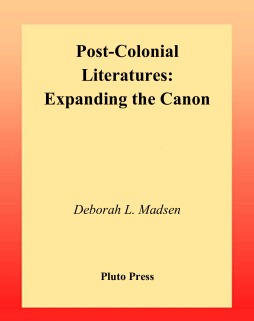
Additional Information
Book Details
Abstract
The postcolonial literary canon remains comprised of privileged national and regional texts. The English-language literatures of Africa, India, Canada, Australia, New Zealand, Southeast Asia and the Caribbean clearly emerged from an earlier model of ‘Commonwealth literature’. Post-Colonial Literatures examines the development of this body of writing, and is the first such study to expand the paradigm to accommodate the literatures of the colonised peoples of North America.
The authors engage with the major debates within existing postcolonial studies, addressing issues such as hybridity, subaltern voices, decolonisation, multiculturalism and border cultures. Subjects covered include Fred D’Aguiar, Merle Collins and Toni Morrison; Native Candian writing and US-Canadian literary relations; writings of the Autralian Aborignals; women writers in Zimbabwe; and the relationship between black and Hispanic discourses of America.
Table of Contents
| Section Title | Page | Action | Price |
|---|---|---|---|
| Contents | v | ||
| Acknowledgements | vii | ||
| 1. Beyond the Commonwealth: Post-Colonialism and American Literature | 1 | ||
| THE EXCLUSION OF US TEXTS FROM THE POST-COLONIAL CANON | 3 | ||
| COMPARATIVITY AS A POST-COLONIAL METHODOLOGY | 5 | ||
| Works Cited | 12 | ||
| 2. Post-Colonialism in the United States: Diversity or Hybridity? | 14 | ||
| IS THE US POST-COLONIAL? | 16 | ||
| IMMIGRATION AS A MASCULINE ENTERPRISE | 20 | ||
| THE PLEASURE PRINCIPLE | 23 | ||
| Works Cited | 27 | ||
| 3. Ethical Reading and Resistant Texts | 29 | ||
| Works Cited | 43 | ||
| 4. Fractures: Written Displacements in Canadian/US Literary Relations | 45 | ||
| MINUS TIME – 1 | 45 | ||
| IMAGE 1 – HOLLYWOOD NORTH | 47 | ||
| MINUS TIME – 2 | 48 | ||
| IMAGE 2 – THE BULLY | 51 | ||
| MINUS TIME – 3 | 52 | ||
| FINAL IMAGE/IMAGE WITHOUT END – THE ABORIGINAL | 54 | ||
| Works Cited | 56 | ||
| 5. The Rhythm of Difference: Language and Silence in \"The Chant of Jimmie Blacksmith\" and \"The Piano\" | 58 | ||
| Works Cited | 70 | ||
| 6. Locating and Celebrating Difference: Writing by South African and Aboriginal Women Writers | 72 | ||
| SEMI-FICTIONALIZED AUTOBIOGRAPHY | 74 | ||
| REPRESENTATION AND WRITING | 77 | ||
| BESSIE HEAD | 81 | ||
| LOCATION, GEOGRAPHY AND IDENTITY | 83 | ||
| Works Cited | 85 | ||
| 7. Coming in From the Margins: Gender in Contemporary Zimbabwean Writing | 88 | ||
| Works Cited | 101 | ||
| 8. The Memory of Slavery in Fred D'Aguiar's \"Feeding the Ghosts\" | 104 | ||
| Works Cited | 118 | ||
| 9. 'Versioning' the Revolution: Gender and Politics in Merle Collins's \"Angel\" | 120 | ||
| Works Cited | 131 | ||
| 10. Erupting Funk: The Political Style of Toni Morrison's \"Tar Baby\" and \"The Bluest Eye\" | 133 | ||
| Works Cited | 146 | ||
| 11. Afro-Hispanic Literature and Feminist Theories: Thinking Ethics | 148 | ||
| I | 148 | ||
| II | 152 | ||
| III | 156 | ||
| Works Cited | 161 | ||
| 12. Chicano/a Literature: An Active Interanimating of Competing Discourses | 164 | ||
| Works Cited | 176 | ||
| 13. Border Theory and the Canon | 180 | ||
| Works Cited | 203 | ||
| 14. Racialism and Liberation in Native American Literature | 206 | ||
| Works Cited | 215 | ||
| 15. Ants in the System: 'Thinking Strongly' about Native American Stories | 218 | ||
| Works Cited | 225 | ||
| List of Contributors | 226 | ||
| Index | 229 | ||
| abolition, | 107 |
